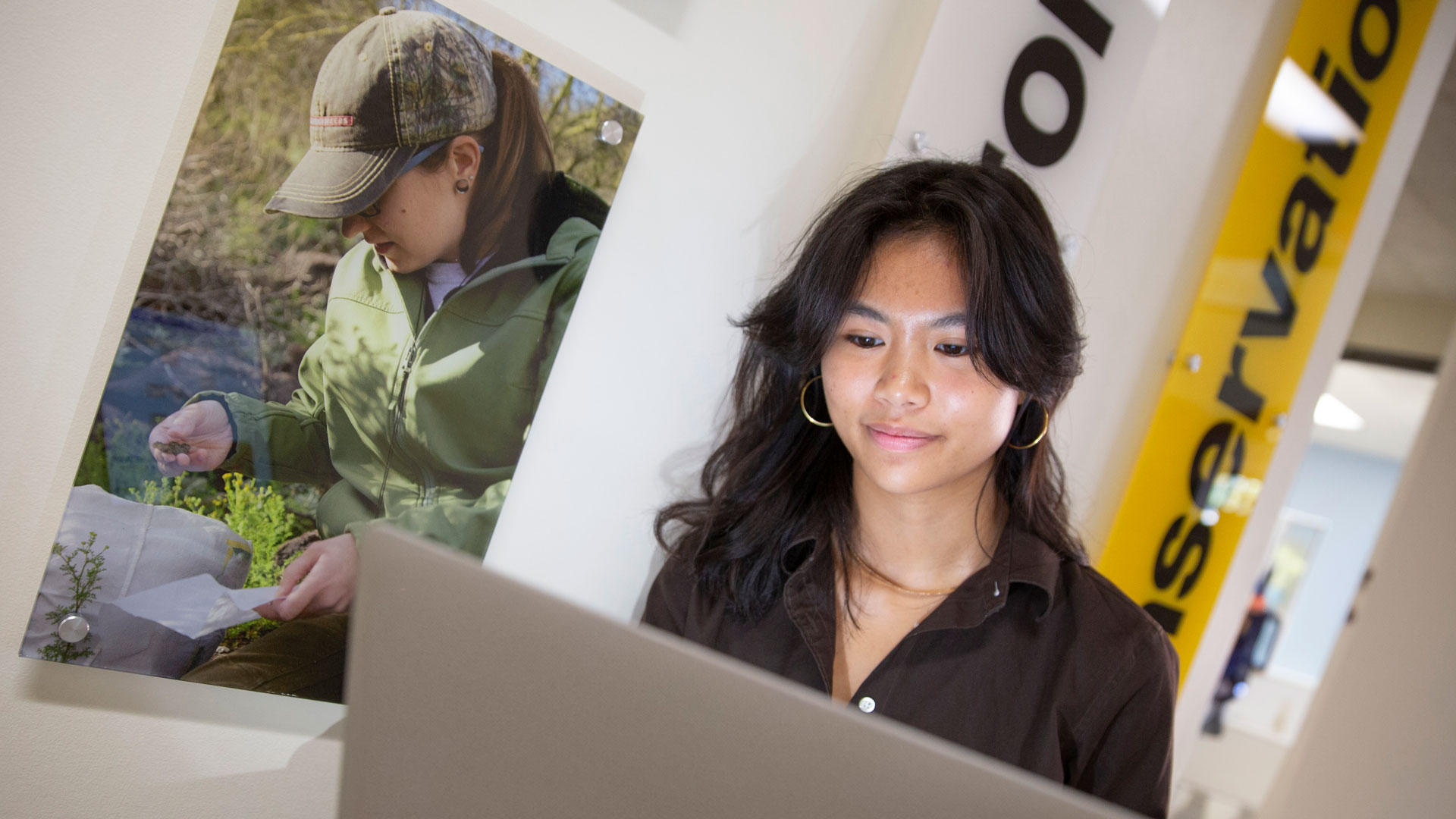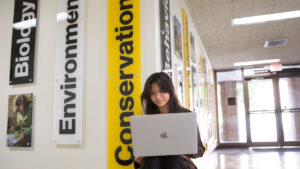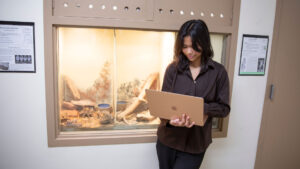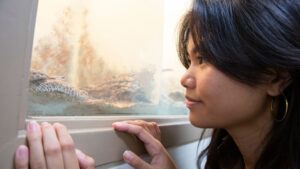Sofia Vargas
Computer science
Hometown: San Diego, California, United States
Graduation date: Spring 2027
Additional details: Honors student
GCSP research stipend | Fall 2024
Using Graph Coloring to Optimize Species Reintroduction
This project aims to use a graph coloring algorithm to identify optimal sites for reintroducing endangered species bred in captivity. Past reintroduction efforts have faced mixed results due to environmental factors such as predators and food availability. By translating environmental conditions and species locations into a graph, the graph can be assigned a certain amount of colors such that no adjacent vertices share the same color. The coloring algorithm will then color the graph such that species will not be adjacent to unfit environmental conditions. This approach will help improve the chances of successful species reintroduction and long-term survival.
Mentor: Xiaofan Yuan
Featured project | Fall 2024

Sofia Vargas, a computer science sophomore, finds that her major provides the freedom to explore and develop a variety of skills because it can be done anywhere. She has chosen to apply her skills as part of the GCSP research stipend program to develop a computer program with a graph coloring data visualization algorithm to help determine optimal sites for endangered species reintroduction, particularly in Arizona. She is conducting her interdisciplinary research under the mentorship of Xiaofan Yuan, a postdoctoral scholar in the ASU School of Mathematical and Statistical Sciences.
What made you want to get involved in the GCSP research stipend program?
I wanted to get involved in the program to gain experience in research projects, and I chose the GCSP research stipend specifically because it allowed me to choose a research mentor who was not part of the Fulton Schools. I appreciate that I can involve myself in research that is not limited to engineering, and I can instead apply my engineering knowledge to different interdisciplinary fields.
Why did you choose the project you’re working on?
I chose my current project because I was interested in sustainability and math. While I was researching background knowledge for my project, I learned that previous endangered species reintroduction efforts had mixed results due to the environmental factors the species were reintroduced to, whether they be food, predators or other factors. I saw this as an opportunity to try to solve real-world problems in sustainability with computer science and math.
How will your research project impact the world?
I hope that my project will impact the world by making species reintroduction efforts more efficient and effective. The more successful reintroduction efforts are, the stronger our biodiversity becomes, ultimately making our ecosystem more sustainable. I hope first that my research project can make an impact on our local community. By working on cases for species that are native to Arizona, we can see the results of the project directly and determine what needs to be changed. However, species reintroduction is a practice for ecosystems all over the world, so I aspire to eventually apply the results of my research project to different areas.
What has been your most memorable experience as a student researcher in this program?
My most memorable experience was being able to talk to people in the U.S. Fish and Wildlife Service. I was able to get in contact with them by first reaching out to Dr. Leah Gerber from the ASU Center for Biodiversity Outcomes, who redirected me to them. It was great to have the chance to work with a department outside of ASU with experts in this field who are just as enthusiastic and passionate as I am about the project. Having this opportunity made me feel that my research project could actually have a tangible impact on our local community and ecosystem.
How do you see this experience helping with your career or advanced degree goals?
My experience with the GCSP research stipend has helped my goals by developing my programming skills, utilizing them in real-world applications and working with experts in diverse fields. These are all traits that I believe will be important later in my career. It has also given me the opportunity to explore interests that I would like to pursue in the future. This project has sparked my interest in the intersection between computer science, ecology and biology, and now I hope to continue exploring this intersection, either in industry or through research.
Why should other students get involved in this program?
Other students should get involved in this program if they want to gain research experience, fulfill their GCSP competencies and build connections with students and faculty alike. I believe it is a great program for anyone looking for their first research experience; students do not necessarily need prior research experience to apply for the program — I did not have any prior experience. The program fosters greater commitment to and involvement in a student’s projects through tasks such as writing your own abstract and presenting at the Fulton Forge Student Research Expo, which is an opportunity not always given to students conducting research outside of the program.


